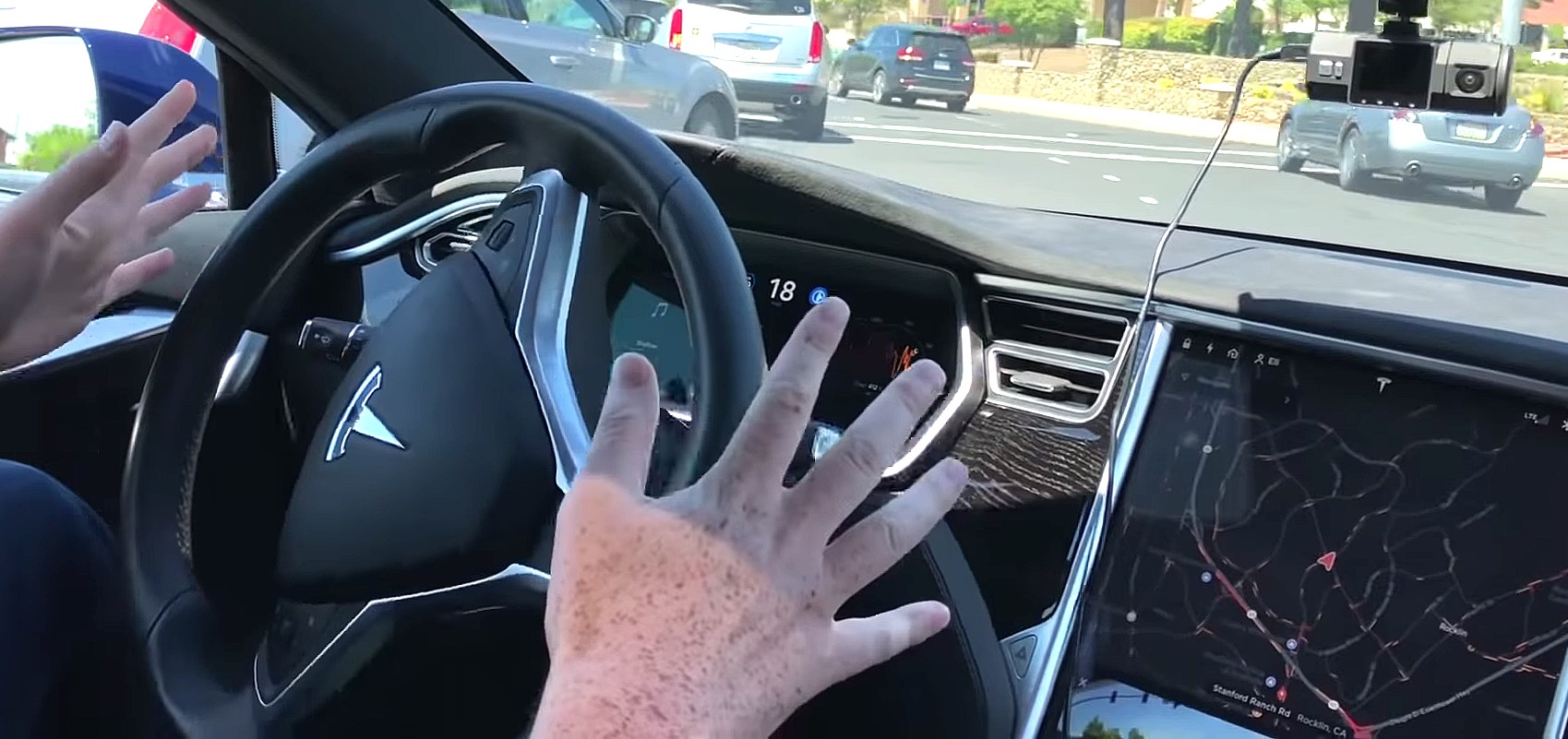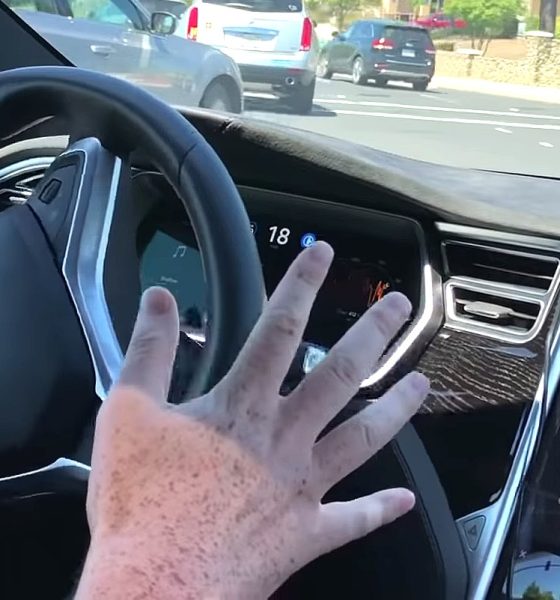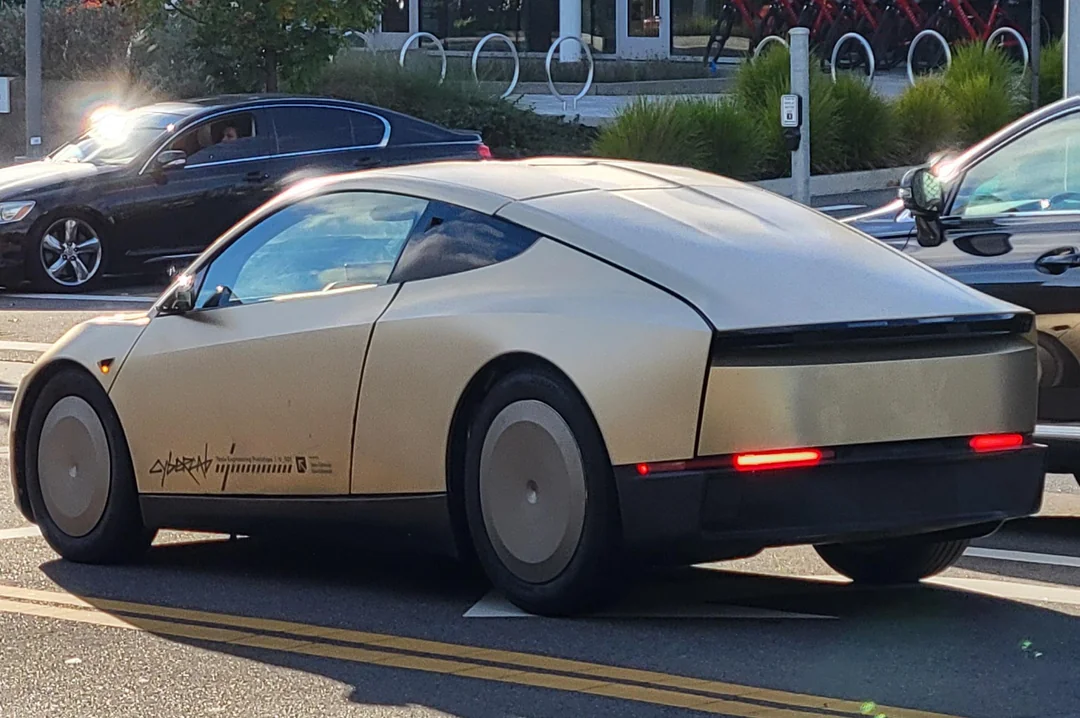

News
Experts’ dismissal of Tesla’s Full Self Driving push proves Elon Musk is still not taken seriously
Despite delays, Elon Musk remains optimistic that Tesla’s efforts to achieve Full Self Driving will bear fruit soon. This was highlighted in a statement during his appearance at the recently held 2020 World Artificial Intelligence Conference in China, where he noted that Tesla is closing in on “Level 5” functionalities. Experts in the field of automation beg to differ.
In a recent statement to Automotive News, Sam Abuelsamid, principal analyst at Guidehouse Insights (formerly Navigant Research) and Missy Cummings, director of the Humans and Autonomy Laboratory at Duke University, openly dismissed Tesla’s efforts to achieve full self driving. In a scathing rebuke, Abuelsamid described Musk’s targets as absurd. He also expressed his pessimism about Tesla’s approach to automation, which focuses on vision and artificial intelligence.
“The cars they are building will never be Level 5, period. It’s nonsense. He needs to shut up until he can deliver something. The premise of making highly automated systems on cameras alone is fundamentally flawed. Their approach to software doing end-to-end AI systems is almost certainly not going to work. I don’t believe it can work. AI is too brittle,” he said.
It should be noted that Abuelsamid recently published a study ranking companies that are currently pursuing autonomy. Similar to studies conducted by Guidehouse Insights when it was still operating as Navigant Research, Abuelsamid ranked Tesla dead last, even behind startups like Navya, which have limited real world driving data.
Abuelsamid’s sentiments were echoed by Missy Cummings, who also argued that there is no way that Tesla could achieve Level 5 autonomy with its vehicles. In a statement to KCBS Radio, Cummings noted that Elon Musk likely does not understand what Level 5 Automation really is. This is an interesting comment from the director of the Humans and Autonomy Laboratory at Duke University, considering that Waymo CEO John Krafcik noted last year that ultimately, “Level 5 is a bit of a myth.”
“There is no way, shape, or form the car is going to be Level 5. He doesn’t really understand what Level 5 is. I think what he means is Level 4, and he’s not even going to get Level 4. The perception systems don’t work well in weather conditions, with long shadows. We know the Tesla perception system, and the news is it’s a really bad system,” she remarked.
While there is some merit in criticizing the Tesla CEO for missing his targets with regards to the release of the electric car maker’s full self driving system, it seems far too careless to simply dismiss all the work that Tesla has accomplished over the years either. The company, after all, is gathering real world driving data at an unprecedented scale that’s unrivaled by companies like Waymo, and that matters much when it comes to training neural networks, as emphasized by ARK Invest CEO Cathie Wood. Tesla’s vision based approach to autonomy has also gained support from notable names such as George Hotz, who believes that Tesla would eventually become the Apple of self driving cars.
It is unfortunate, but based on the dismissive and almost aggressive rebuke of Tesla’s efforts from the experts tapped by Automotive News, it appears there is still a general tendency to completely dismiss Elon Musk and his initiatives. Interestingly enough, these statements are pretty familiar to those who have followed the SpaceX and Tesla story over the years. It may be difficult to recall at this point, but there was a time when it was believed that landing the Falcon 9 first stage on land and an autonomous barge on the sea is impossible. There was also a time when the Model X was considered unbuildable.
Fortunately, Tesla and its CEO are a stubborn bunch, and it takes a lot more than skepticism to discourage the company. This is especially notable considering that Tesla is currently looking to roll out a massive rewrite of its Autopilot suite, which should take the company even closer to full self driving. Perhaps this time around, Elon Musk’s statements about Level 5 Autonomy may actually be pretty accurate, at least in terms of its features and timeframe.
“I’m extremely confident that level five or essentially complete autonomy will happen, and I think, will happen very quickly,” said Musk, answering another question. I think at Tesla, I feel like we are very close to level five autonomy. I think—I remain confident that we will have the basic functionality for level five autonomy complete this year,” Musk said at the 2020 WAIC.

News
Tesla Model 3 named New Zealand’s best passenger car of 2025
Tesla flipped the switch on Full Self-Driving (Supervised) in September, turning every Model 3 and Model Y into New Zealand’s most advanced production car overnight.

The refreshed Tesla Model 3 has won the DRIVEN Car Guide AA Insurance NZ Car of the Year 2025 award in the Passenger Car category, beating all traditional and electric rivals.
Judges praised the all-electric sedan’s driving dynamics, value-packed EV tech, and the game-changing addition of Full Self-Driving (Supervised) that went live in New Zealand this September.
Why the Model 3 clinched the crown
DRIVEN admitted they were late to the “Highland” party because the updated sedan arrived in New Zealand as a 2024 model, just before the new Model Y stole the headlines. Yet two things forced a re-evaluation this year.
First, experiencing the new Model Y reminded testers how many big upgrades originated in the Model 3, such as the smoother ride, quieter cabin, ventilated seats, rear touchscreen, and stalk-less minimalist interior. Second, and far more importantly, Tesla flipped the switch on Full Self-Driving (Supervised) in September, turning every Model 3 and Model Y into New Zealand’s most advanced production car overnight.
FSD changes everything for Kiwi buyers
The publication called the entry-level rear-wheel-drive version “good to drive and represents a lot of EV technology for the money,” but highlighted that FSD elevates it into another league. “Make no mistake, despite the ‘Supervised’ bit in the name that requires you to remain ready to take control, it’s autonomous and very capable in some surprisingly tricky scenarios,” the review stated.
At NZ$11,400, FSD is far from cheap, but Tesla also offers FSD (Supervised) on a $159 monthly subscription, making the tech accessible without the full upfront investment. That’s a game-changer, as it allows users to access the company’s most advanced system without forking over a huge amount of money.
News
Tesla starts rolling out FSD V14.2.1 to AI4 vehicles including Cybertruck
FSD V14.2.1 was released just about a week after the initial FSD V14.2 update was rolled out.

It appears that the Tesla AI team burned the midnight oil, allowing them to release FSD V14.2.1 on Thanksgiving. The update has been reported by Tesla owners with AI4 vehicles, as well as Cybertruck owners.
For the Tesla AI team, at least, it appears that work really does not stop.
FSD V14.2.1
Initial posts about FSD V14.2.1 were shared by Tesla owners on social media platform X. As per the Tesla owners, V14.2.1 appears to be a point update that’s designed to polish the features and capacities that have been available in FSD V14. A look at the release notes for FSD V14.2.1, however, shows that an extra line has been added.
“Camera visibility can lead to increased attention monitoring sensitivity.”
Whether this could lead to more drivers being alerted to pay attention to the roads more remains to be seen. This would likely become evident as soon as the first batch of videos from Tesla owners who received V14.21 start sharing their first drive impressions of the update. Despite the update being released on Thanksgiving, it would not be surprising if first impressions videos of FSD V14.2.1 are shared today, just the same.
Rapid FSD releases
What is rather interesting and impressive is the fact that FSD V14.2.1 was released just about a week after the initial FSD V14.2 update was rolled out. This bodes well for Tesla’s FSD users, especially since CEO Elon Musk has stated in the past that the V14.2 series will be for “widespread use.”
FSD V14 has so far received numerous positive reviews from Tesla owners, with numerous drivers noting that the system now drives better than most human drivers because it is cautious, confident, and considerate at the same time. The only question now, really, is if the V14.2 series does make it to the company’s wide FSD fleet, which is still populated by numerous HW3 vehicles.
News
Waymo rider data hints that Tesla’s Cybercab strategy might be the smartest, after all
These observations all but validate Tesla’s controversial two-seat Cybercab strategy, which has caught a lot of criticism since it was unveiled last year.

Toyota Connected Europe designer Karim Dia Toubajie has highlighted a particular trend that became evident in Waymo’s Q3 2025 occupancy stats. As it turned out, 90% of the trips taken by the driverless taxis carried two or fewer passengers.
These observations all but validate Tesla’s controversial two-seat Cybercab strategy, which has caught a lot of criticism since it was unveiled last year.
Toyota designer observes a trend
Karim Dia Toubajie, Lead Product Designer (Sustainable Mobility) at Toyota Connected Europe, analyzed Waymo’s latest California Public Utilities Commission filings and posted the results on LinkedIn this week.
“90% of robotaxi trips have 2 or less passengers, so why are we using 5-seater vehicles?” Toubajie asked. He continued: “90% of trips have 2 or less people, 75% of trips have 1 or less people.” He accompanied his comments with a graphic showing Waymo’s occupancy rates, which showed 71% of trips having one passenger, 15% of trips having two passengers, 6% of trips having three passengers, 5% of trips having zero passengers, and only 3% of trips having four passengers.
The data excludes operational trips like depot runs or charging, though Toubajie pointed out that most of the time, Waymo’s massive self-driving taxis are really just transporting 1 or 2 people, at times even no passengers at all. “This means that most of the time, the vehicle being used significantly outweighs the needs of the trip,” the Toyota designer wrote in his post.
Cybercab suddenly looks perfectly sized
Toubajie gave a nod to Tesla’s approach. “The Tesla Cybercab announced in 2024, is a 2-seater robotaxi with a 50kWh battery but I still believe this is on the larger side of what’s required for most trips,” he wrote.
With Waymo’s own numbers now proving 90% of demand fits two seats or fewer, the wheel-less, lidar-free Cybercab now looks like the smartest play in the room. The Cybercab is designed to be easy to produce, with CEO Elon Musk commenting that its product line would resemble a consumer electronics factory more than an automotive plant. This means that the Cybercab could saturate the roads quickly once it is deployed.
While the Cybercab will likely take the lion’s share of Tesla’s ride-hailing passengers, the Model 3 sedan and Model Y crossover would be perfect for the remaining 9% of riders who require larger vehicles. This should be easy to implement for Tesla, as the Model Y and Model 3 are both mass-market vehicles.









